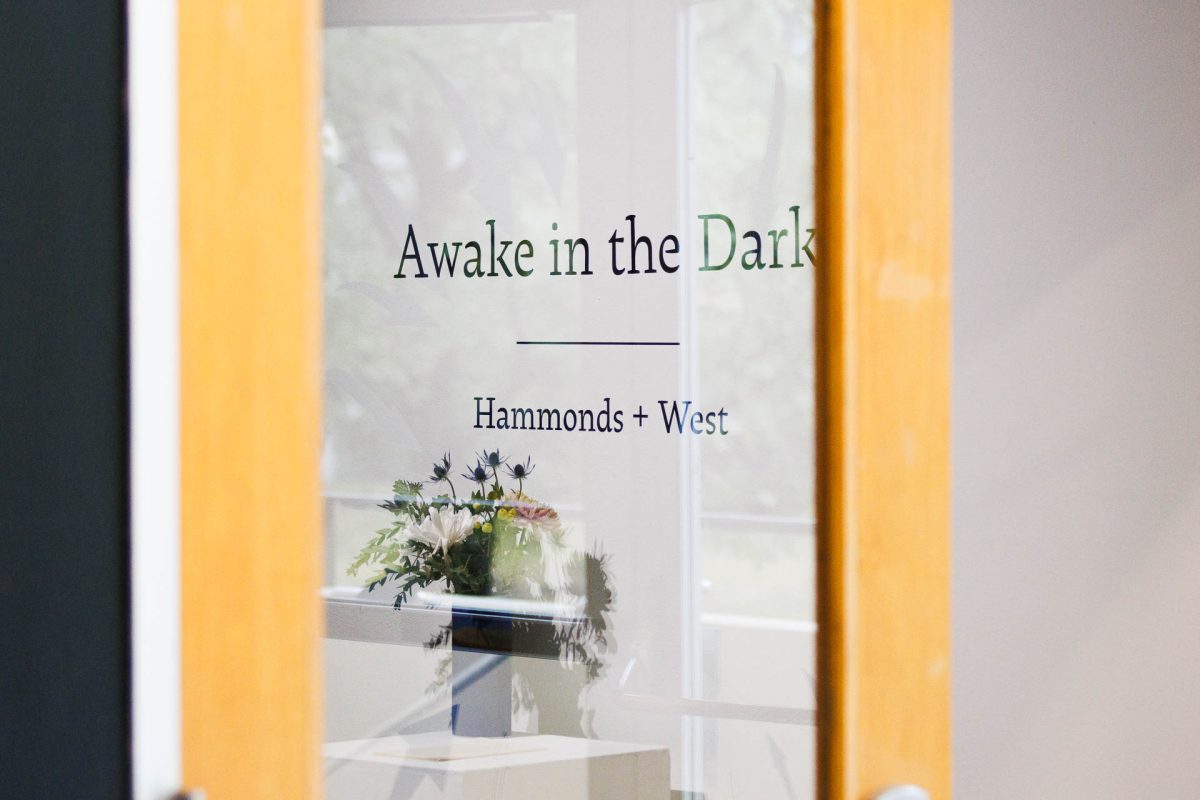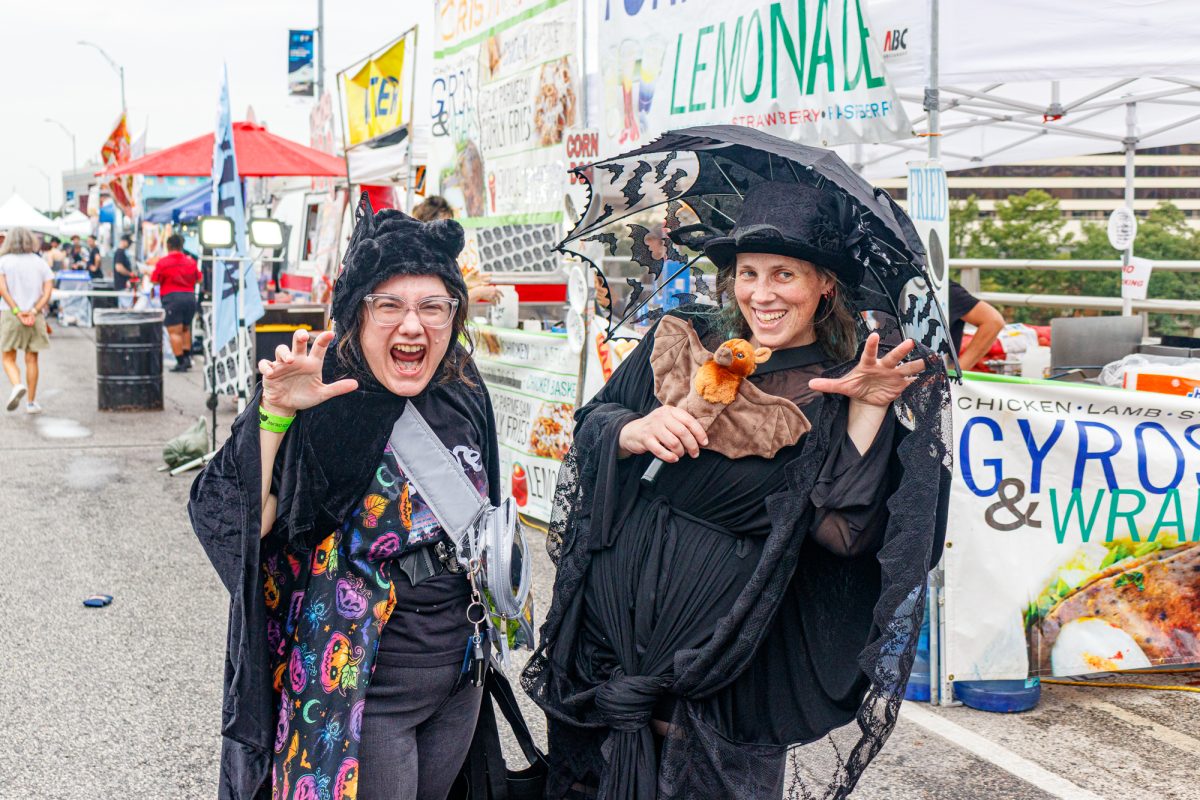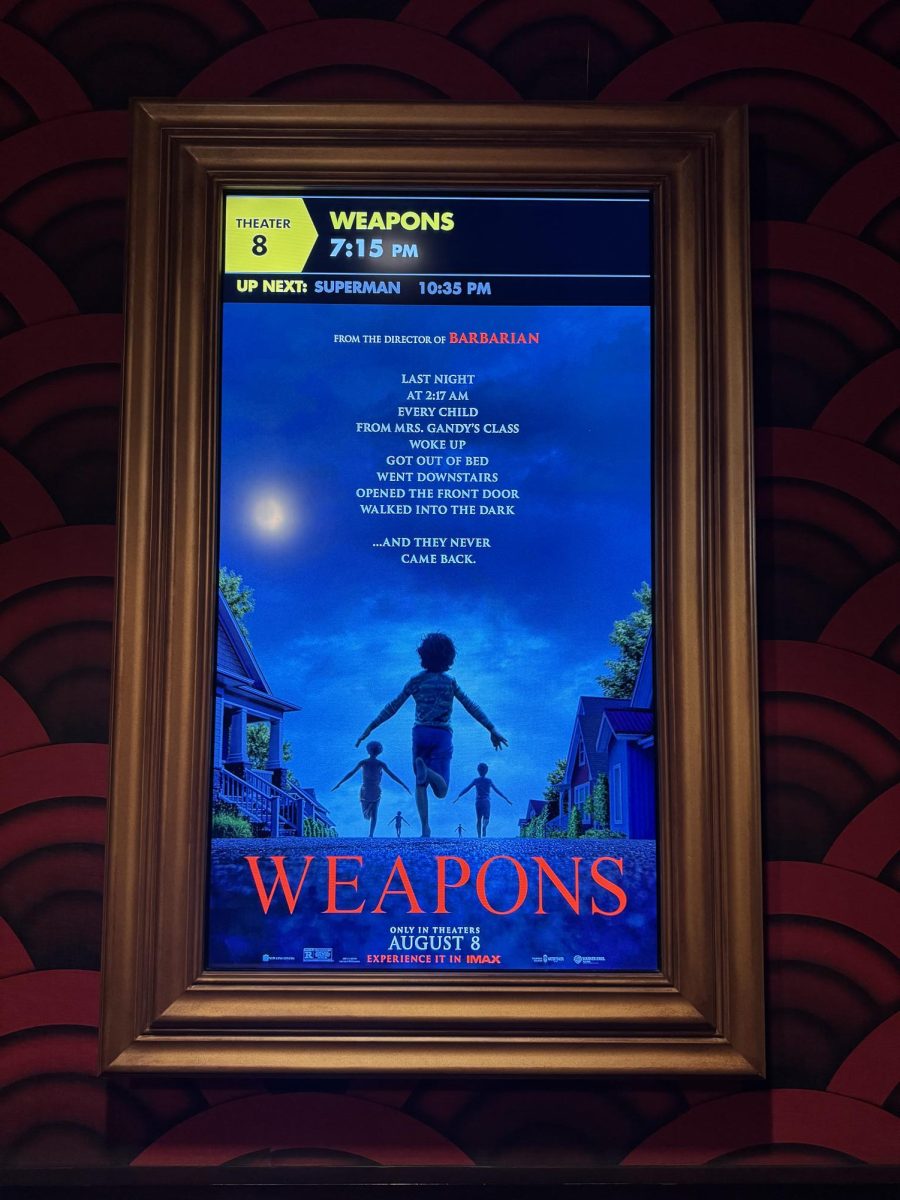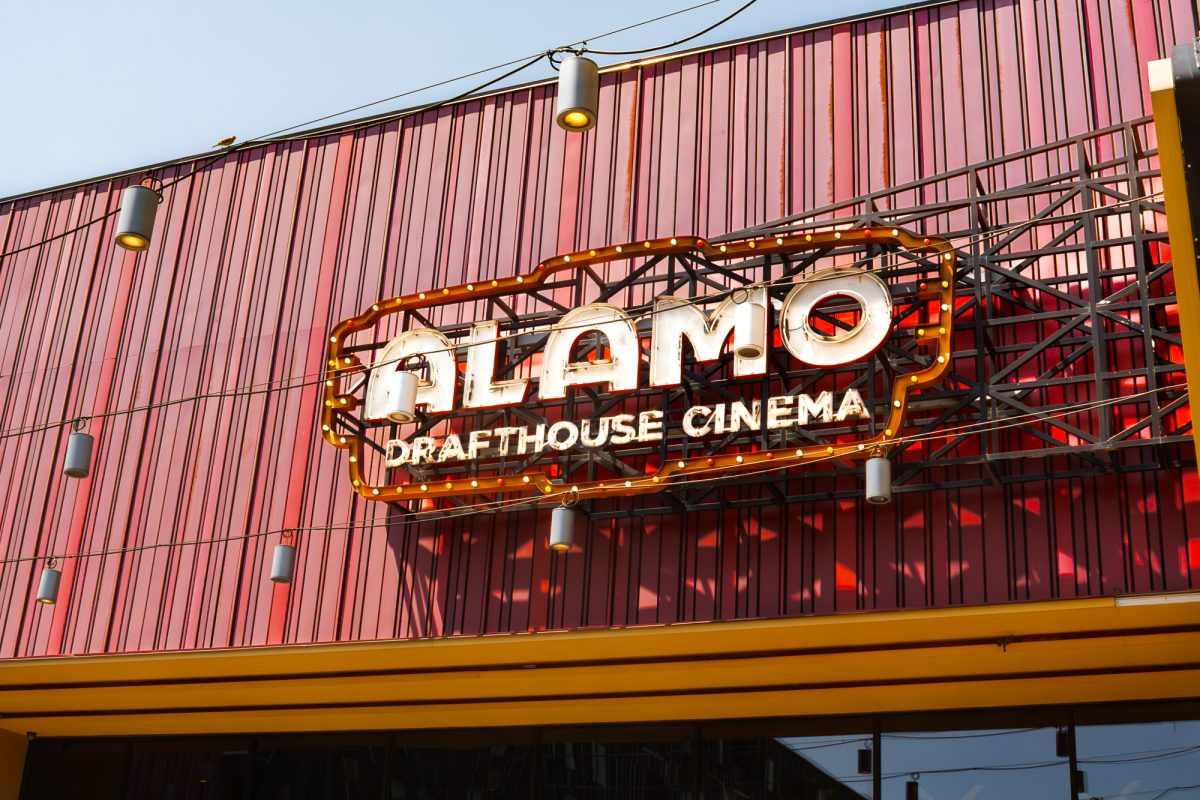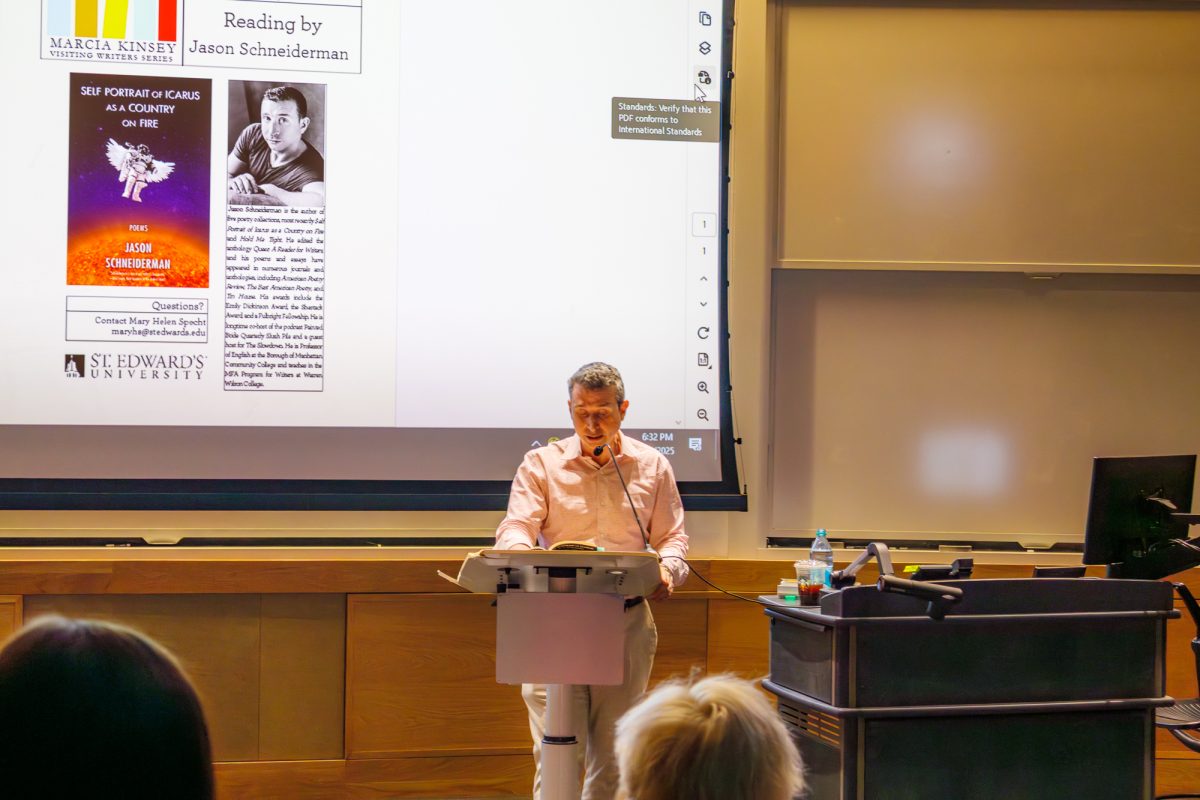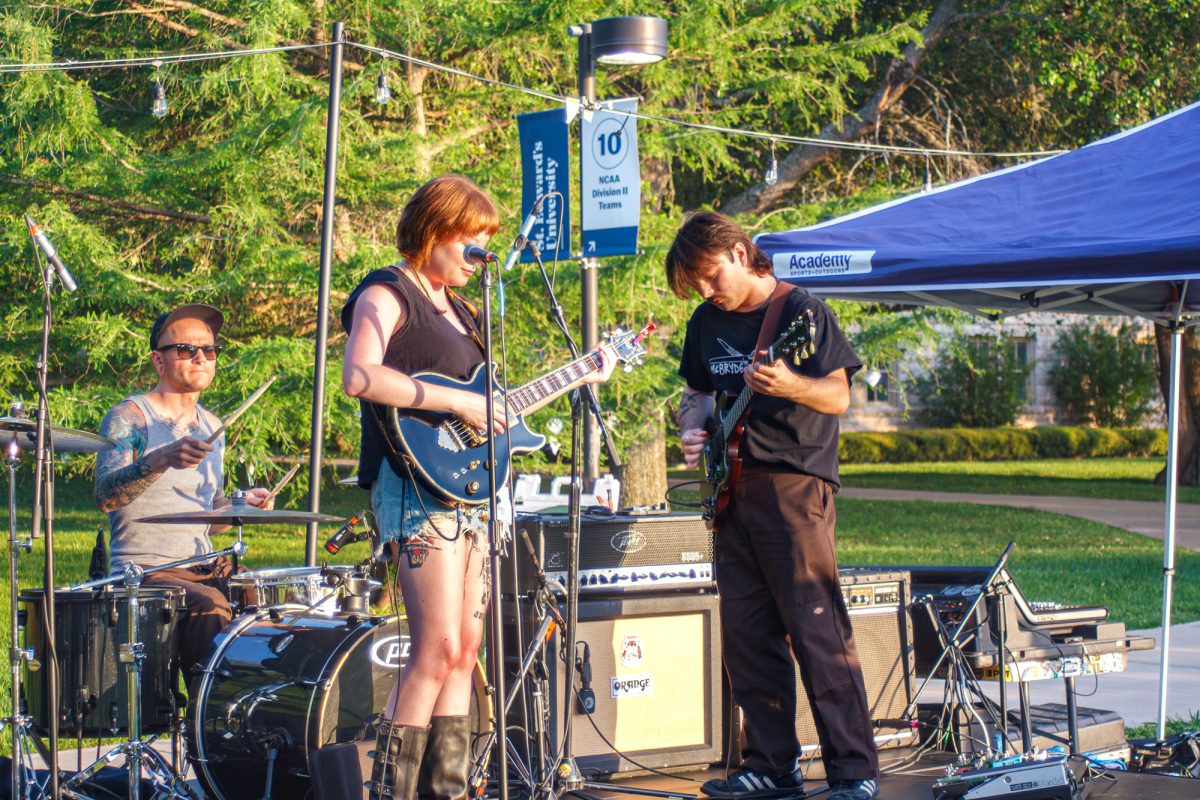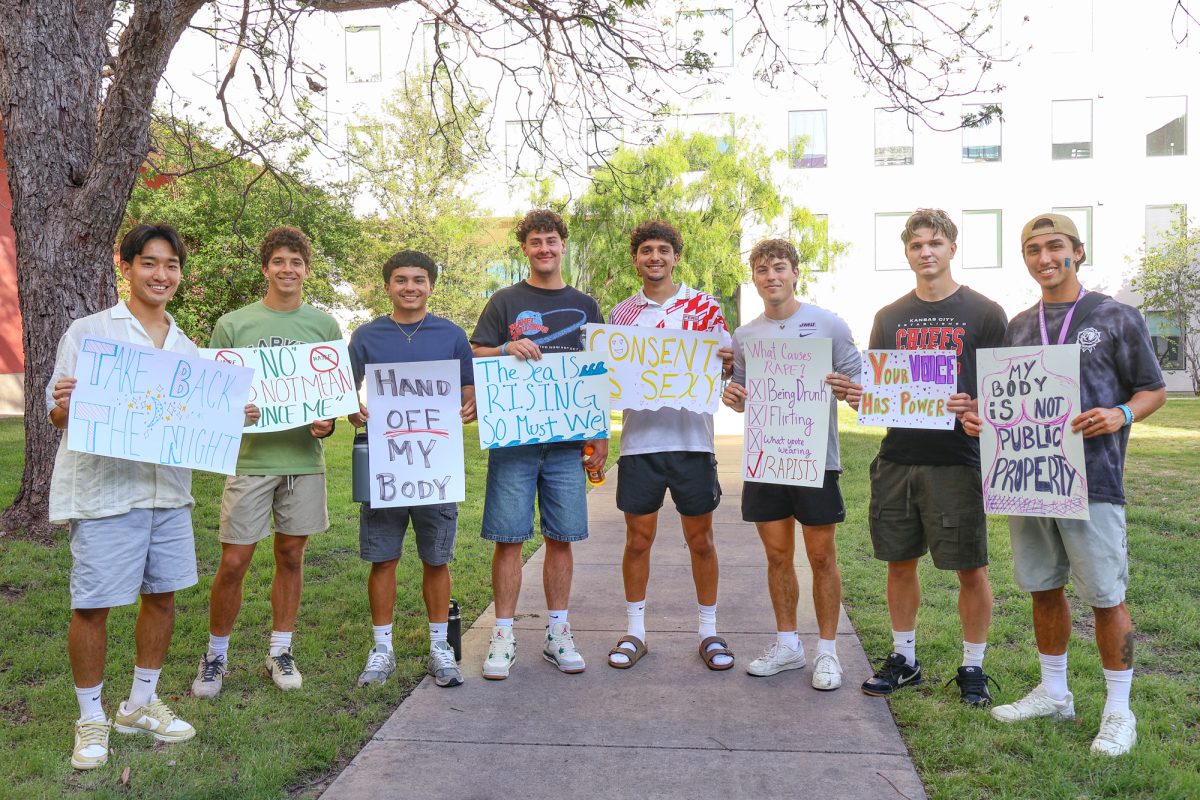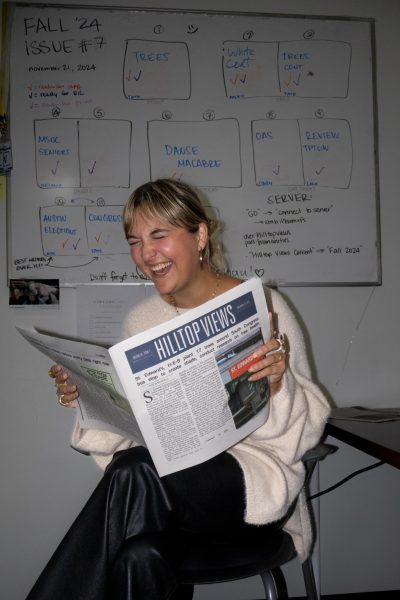As you make your way deeper into the gallery of our campus’ Fine Arts Building, 12 scrolls unfurl from the ceiling to the floor, each overlapping the next as the image slowly comes into view. A life-sized drawing of a neighborhood torn apart by the effects of climate change rests against the wall, overlaid with visuals of fire, running water and other natural elements. Speakers installed behind the scrolls broadcast the sound of flowing water and Sasha West, co-creator of the exhibit and St. Edward’s University (SEU) writing and rhetoric professor, reading her poems, “Ode to Fossil Fuels” and “My House Was Beside the River.”
“What I especially love is that as the poem is unfolding in sound, your eye might be caught by the river rushing by, and that might feel momentarily interesting and gather you in,” West said. “Or you might start thinking about the linemaking that’s happening to make a house. And this thing is no longer a home, but there’s still all of these pieces of it. It just gives you a way to sit with that attention for longer and to kind of feel it in your body. And I think part of what art can do is move those big, abstract things, that are just ideas, into our bodies so that we’re inside the deep complexity of it.”
West and co-creator and SEU visual arts professor Hollis Hammonds, have been collaborating on exhibitions for over four years, telling stories through a combination of poetry and artwork. They formed their collective, “Hammonds + West,” after seeing each other’s work and realizing there was a thematic overlap.
“Right before the pandemic, Sasha actually did a reading in this gallery,” Hammonds said. “I happened to be there, and I was like, ‘Oh my God, I can’t believe how amazing your work is and how aligned it is with everything that I believe.’ And the words are similar to the way that I think about making drawings. For instance, my work really has always been about consumerist culture and artifacts like objects that are imbued with human qualities.”
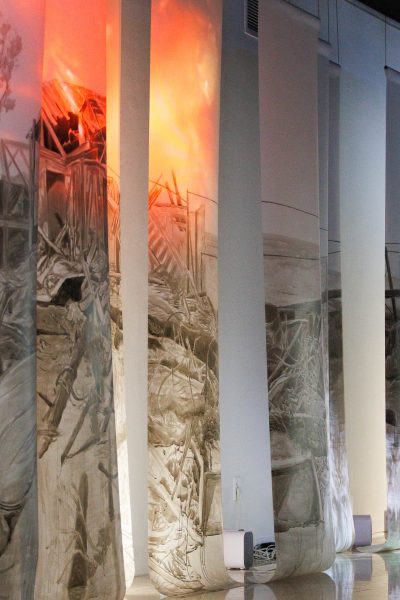
They both tend to lean darker in the execution of their respective art forms, which drew them together in the first place. Their collaboration has enabled them not only to explore these somber spaces together, but also to combine their expertise in conveying a message to the public about the world we may be headed into.
The exhibition literally draws the image of a colossal flood, ripping apart homes and neighborhoods. Telephone poles are down, cars are crushed and floating through what used to be streets, and homes are reduced to piles of wood beams. All the while, West’s voice repeats itself, reminding us of what we have done and where we are headed.
“I would hope that people realize that we’re not alone in this,” West said. “That if you scratch the surface, we’re all really feeling this. We’re feeling this fear, we’re feeling this sadness, and we aren’t talking to each other, and that’s really hard. Most of the things in our life that we go through that are difficult – we need other people around us.”
In creating this exhibit, the intention was not to shame anyone for their contribution to climate change. Hammonds and West believe that we are both victims and perpetrators of our own environment. They encourage us to consider what we are doing and how we live our own lives then slowly make changes where we can. It’s not about defeating the problem in one fell swoop, but about what we can realistically, sustainably do today in an attempt to save tomorrow. The first step is to open a dialogue around the issues and solutions, along with the role we have to play in it.
“I think that we’re just so afraid we’re going to judge each other,” West said, “We’re so afraid we have to have it all figured out. We’re so afraid that if we start talking about it, there will be no bottom to our sorrow, that now we’re in this silence that isn’t serving us as humans and it’s definitely not serving society.”


